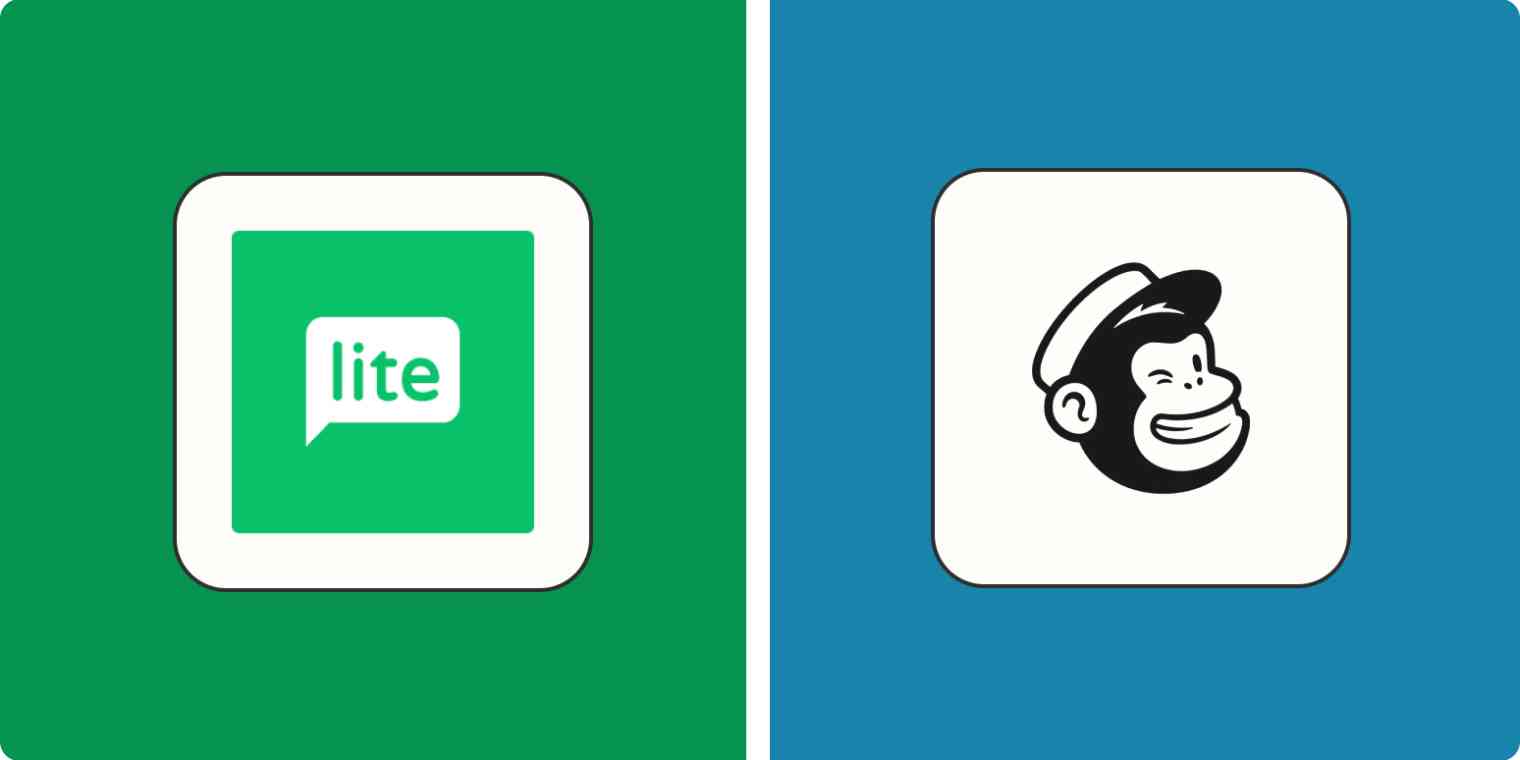Mailchimp has reached near-GoDaddy levels of recognition among small businesses: when I worked at a marketing agency, clients either had Mailchimp or they had nothing. But there are plenty of other options for small business email software. One of them is MailerLite, which I switched to myself a couple years back.
I've used both platforms extensively, and have also evaluated their features in-depth for my MailerLite review and guide to Mailchimp email automation. In preparation for this head-to-head showdown, I created campaigns in both MailerLite and Mailchimp to compare the design, ease of use, automation, analytics, and latest AI features of both. Here's what I found.
MailerLite vs. Mailchimp at a glance
If you're looking for a quick rundown, here's the summary:
Mailchimp is best for eCommerce stores, brick-and-mortar businesses, and experienced marketers. Mailchimp's eCommerce integrations are superb, its SMS messages and physical postcards are perfect for local businesses, and its advanced features and AI integrations will make marketers happy.
MailerLite is best for beginners and most small businesses on a budget. MailerLite's free plan is among the best in the industry. It's easy to use for beginners, while still providing enough features to satisfy most users.
| Mailchimp | MailerLite |
|---|---|---|
Pricing | ⭐⭐ More limited free plan, relatively pricey paid plans, and a Premium plan that costs 10x more than the equivalent MailerLite plan. | ⭐⭐⭐⭐⭐ A full-featured free plan; robust, economical paid plans that will serve most email marketers well. |
Design capabilities | ⭐⭐⭐⭐ A clean interface, AI design features, and 100+ email templates give it a slight edge. | ⭐⭐⭐⭐ Drag-and-drop email editor with many predesigned blocks for speedy email creation. |
Ease of use | ⭐⭐⭐⭐ Easy to use, but the platform's many features means learning everything takes time. | ⭐⭐⭐⭐⭐ Instantly intuitive, even for beginners. |
Advanced features | ⭐⭐⭐ It's not as advanced as some competitors, but Mailchimp shines as an all-in-one marketing tool. | ⭐⭐ MailerLite does email quite well; other features tend to be pretty basic. |
Marketing automation | ⭐⭐⭐⭐ More automation templates and triggers than MailerLite—but there's no automation on the free plan. | ⭐⭐⭐⭐ With automations included for users of the free plan, it's the best deal around. |
AI features | ⭐⭐⭐⭐ Clever use of AI to speed up email design and content creation, with much more on the roadmap. | ⭐ AI features feel like the bare minimum ("AI subject line generator!") and only scratch the surface of what's possible. |
Analytics | ⭐⭐⭐⭐⭐ Advanced eCommerce stats, click maps, Content Optimizer, and more. | ⭐⭐⭐ Only the essentials, but an excellent interface embeds analytics where you most need them. |
Integrations | ⭐⭐⭐⭐ 300+ native integrations; also integrates with Zapier. | ⭐⭐⭐⭐ 140+ native integrations; also integrates with Zapier. |
MailerLite provides more value for money—and has a better free plan
A decade ago, Mailchimp was the preeminent "affordable" small business email marketing tool. No more. These days, Mailchimp has expanded into an all-in-one marketing suite. While that has its own benefits—as we'll explore later—it does mean that Mailchimp has gotten more expensive over time.
At MailerLite, $25/month gets you 2,500 subscribers and unlimited email sends. The equivalent Mailchimp plan costs $41/month and limits the number of emails you can send. (You can increase that limit by upgrading to the Premium plan—for a jaw-dropping $410/month.) Mailchimp's once-robust free plan has also gotten a serious haircut: with 500 contacts, 1,000 monthly email sends, and no automations or A/B testing, it's a significantly throttled version of the full product. If you send more than a couple emails a month, you'll hit a wall fast.
MailerLite, in some ways, is like 2013-era Mailchimp: a great free plan, affordable paid plans, and a tight focus on email marketing rather than all-in-one marketing features. MailerLite's excellent free plan gets you 1,000 subscribers and 12,000 monthly email sends, plus email automation capabilities. This will last most users a long time: I used MailerLite's free plan for over a year before needing to upgrade.
Mailchimp has better templates and design features
While both platforms offer strong design features, Mailchimp has a slight edge overall due to its cleaner user interface, better templates, and AI design technology—though MailerLite caters better to beginners.
MailerLite's editor has everything you'd expect: drag-and-drop elements, eCommerce widgets, and calls-to-action. Its predesigned sections (like side-by-side image + text) come packed with filler content, making it easy to visualize your email's layout before adding text and images. Integrated surveys and quizzes are another standout MailerLite feature; subscriber responses are conveniently stored within MailerLite's platform.
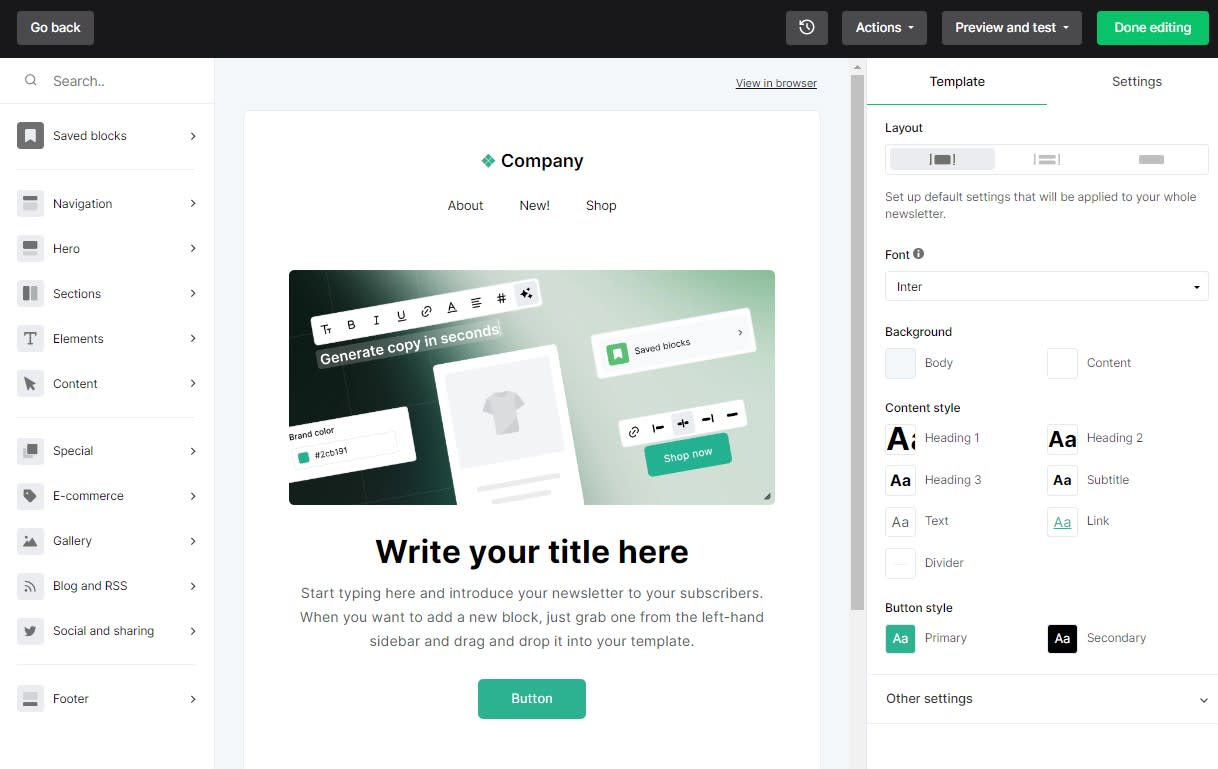
Mailchimp's features are essentially the same. But it's less cluttered than MailerLite (and thus easier to navigate), since its menu items only occupy one side of the screen, and its AI-powered Optimize feature gives suggestions on email improvements. Overall, Mailchimp's email editor feels slightly more advanced, while MailerLite, with its predesigned blocks, caters well to beginners.

Of course, most people don't design emails entirely from scratch. Instead, they get started with templates and edit from there. Mailchimp has an edge here, with 137 email templates to choose from. MailerLite, meanwhile, has 70. The real question, though, is whether the templates are worth using. Beauty is in the eye of the beholder, of course, but I tend to find Mailchimp's templates a bit more polished. It's worth mentioning that free users get the shaft; neither platform offers much in the way of template support unless you pay.

Mailchimp users can also skip templates entirely and use AI instead. You can use Mailchimp's Creative Assistant tool to generate a unique email design based on your brand guidelines. (I'll share more about this AI feature, and others, in a bit). Mailchimp's AI does a capable job of designing unique emails, and as the technology progresses, it's easy to see templates becoming less relevant. MailerLite doesn't have any comparable AI design features; you still have to either use templates or design emails manually.
MailerLite is easier to learn
The "lite" in MailerLite, as the company's founders explain on their About page, represents the goal of simplifying complex things. When it comes to ease of use, they've done their job well: at every turn, MailerLite is uncomplicated, simple to understand, and straightforward to learn.
MailerLite's dashboard, for example, displays a simple analytics overview and limits menu items to the core features you need to manage on a regular basis: email campaigns, subscribers, forms, and automations. Automations—because of the number of variables involved—is naturally the trickiest to learn. But MailerLite's simple Automations editor makes this easy, too.
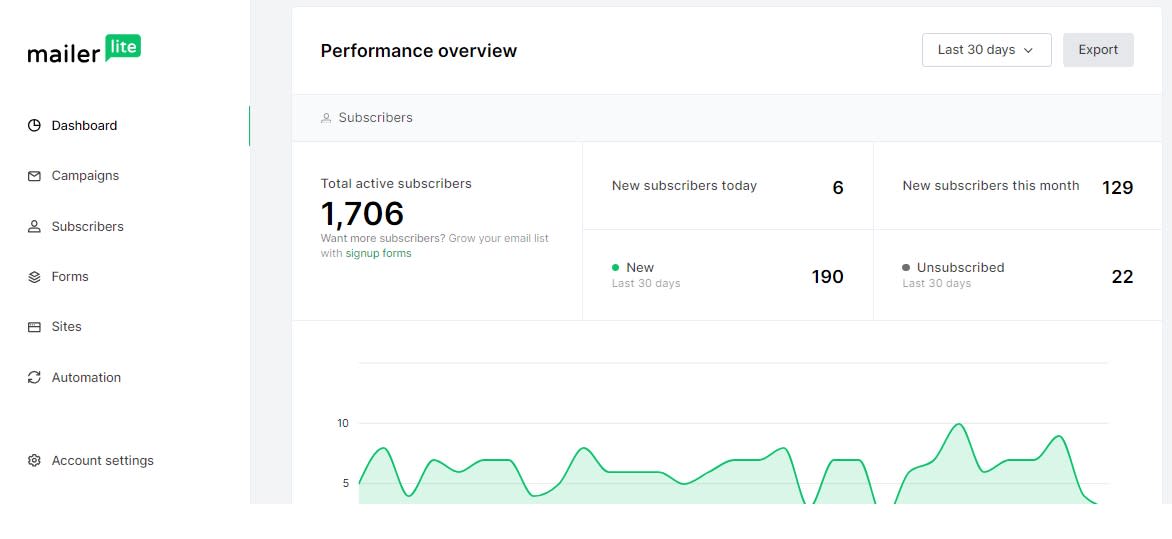
Mailchimp's individual features are equally intuitive, but in a way, Mailchimp is a victim of its own success here: there are so many tools that navigating through them all takes time. For example, it's great that Mailchimp has a Campaign Manager feature that helps you schedule your campaigns, or an SMS feature that lets you contact users by text; but for new users, the proliferation of advanced options like this can lead to overwhelm.

Mailchimp is more comprehensive as an all-in-one marketing tool
If your intent is to buy email software that can cover your general marketing needs too, Mailchimp fits the bill much better than MailerLite. Mailchimp offers email marketing and landing pages, of course, but it also supports Facebook and Instagram ads, organic social posts, and even physical postcards, which it can mail to your audience for $0.79 per card.
I'll say this: MailerLite is fantastic as an email marketing tool. But the more it strays away from email, the less polished it tends to be. Case in point: its landing pages and website builder. MailerLite's landing page templates tend to be pretty basic, as are the website blocks and elements within. In other cases, like MailerLite's Digital products feature, the product doesn't feel well thought-out; it's essentially a dressed-up Stripe payment integration.
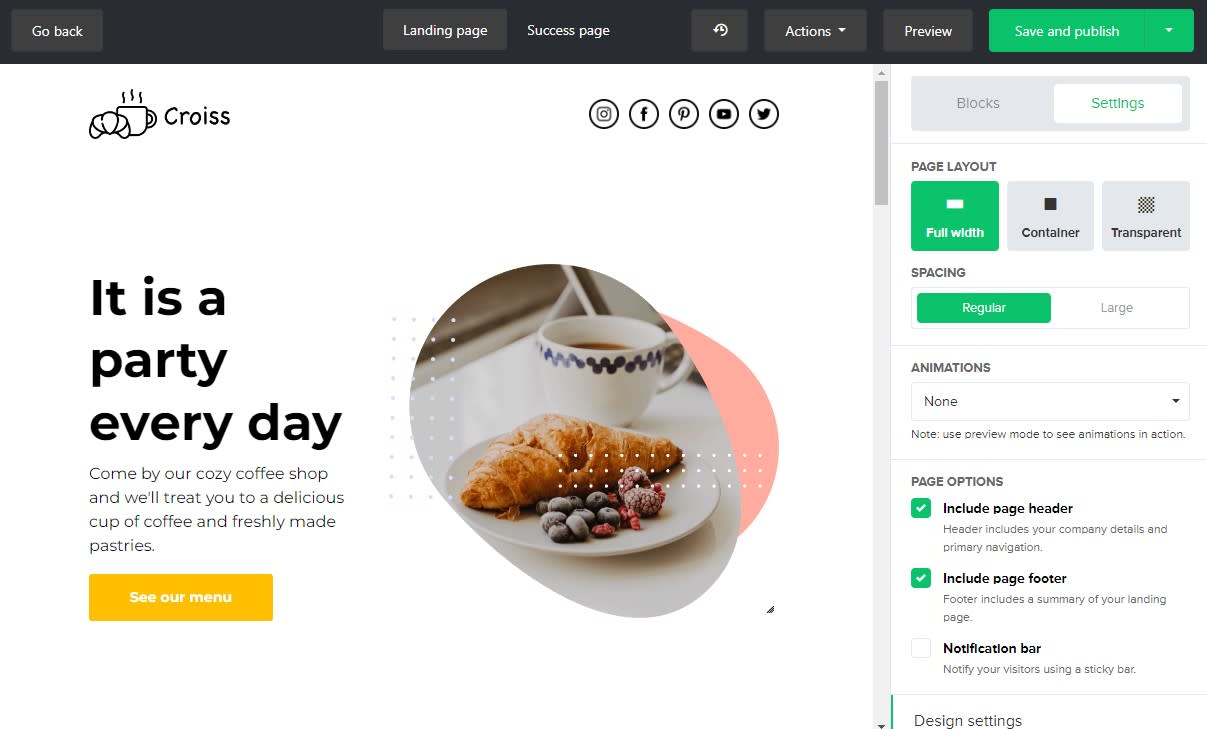
While Mailchimp isn't the most advanced email marketing tool around—that title probably belongs to ActiveCampaign—it works much better than MailerLite as a general-purpose marketing tool. Mailchimp's landing page and eCommerce tools feel more polished than MailerLite's, and nifty features like Appointment Scheduling help businesses do more from within the platform. Mailchimp also serves as a basic CRM, with features like contact-scoring based on each subscriber's level of interaction and the ability to write notes under each contact.
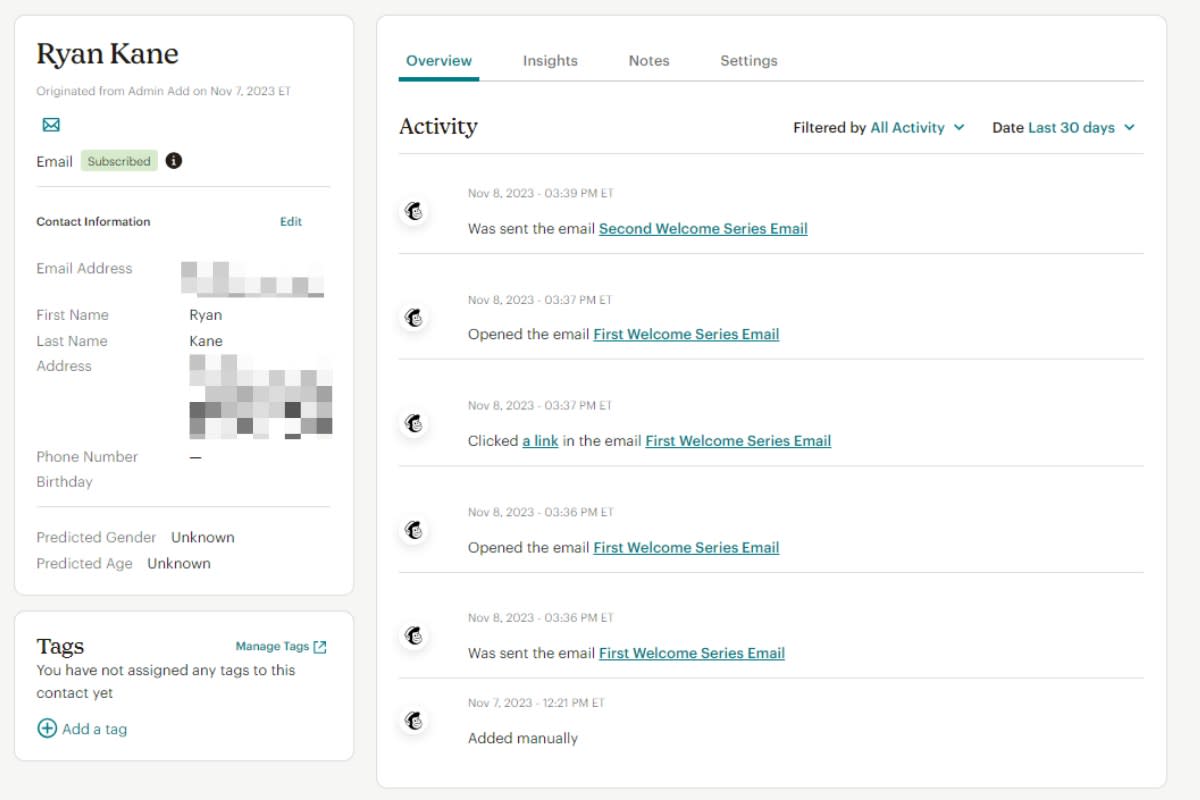
Mailchimp has more powerful automations, for a price
Mailchimp and MailerLite both have powerful email automation features, but Mailchimp's are advanced enough to give it an edge—although in my experience, MailerLite's automation designer is more intuitive.
Using MailerLite to create automations is dead simple. With the visual designer, you can easily construct each step in your automation workflow before going in to edit each individual email. Then, you can fine-tune your automation with features like delays and A/B tests. Conveniently, the analytics stats for each email are built right into the workflow, so you don't need to go anywhere else to understand how your automation is performing.
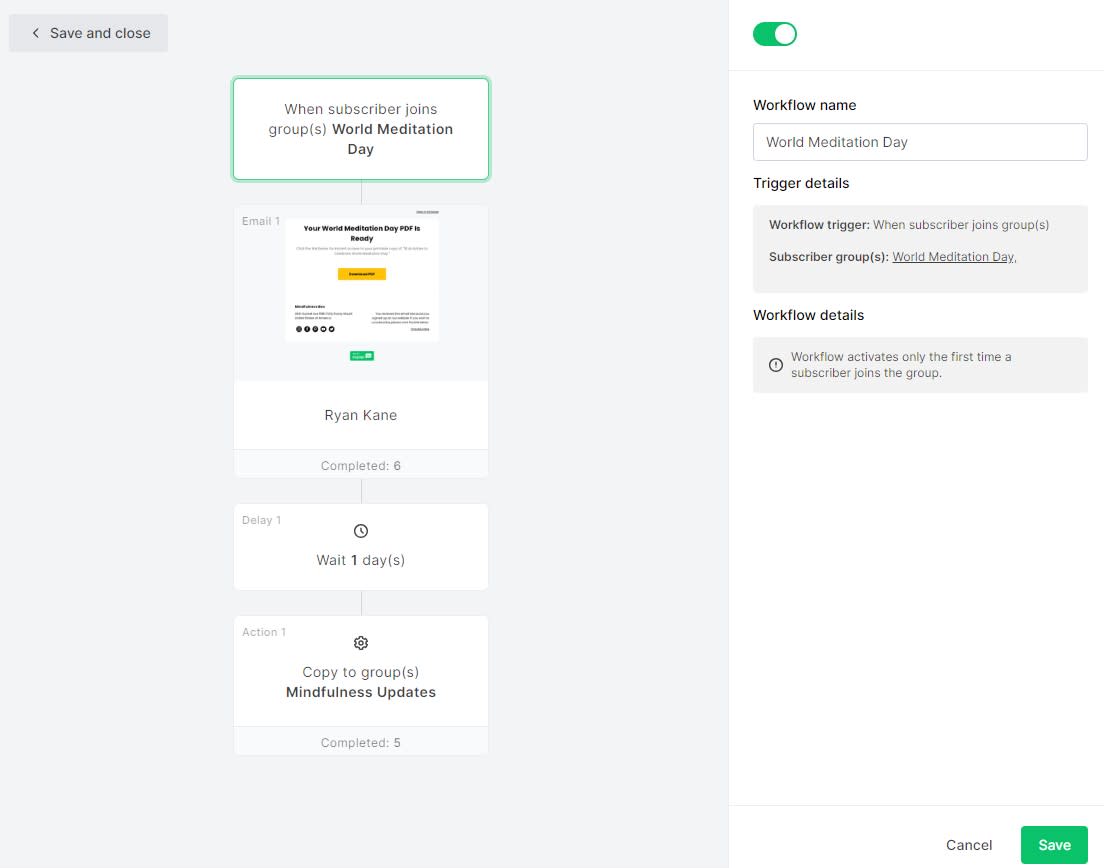
Templates are a limitation for MailerLite, though. MailerLite has only 15 automation templates, compared to Mailchimp's 100+, from Celebrate Mother's Day to Test which discounts lead to more sales. If you want to create an email automation quickly, Mailchimp is more likely to have what you need.
Once you start modifying your automation template, Mailchimp also boasts more options. This difference is especially stark in the case of eCommerce: Mailchimp lets you drop people into the automation based on variables like buys a specific product, abandons cart, time since last purchase, and chat finished in LiveChat account. Mailchimp's visual builder might be more complex than MailerLite's, but the end result is more power and flexibility.
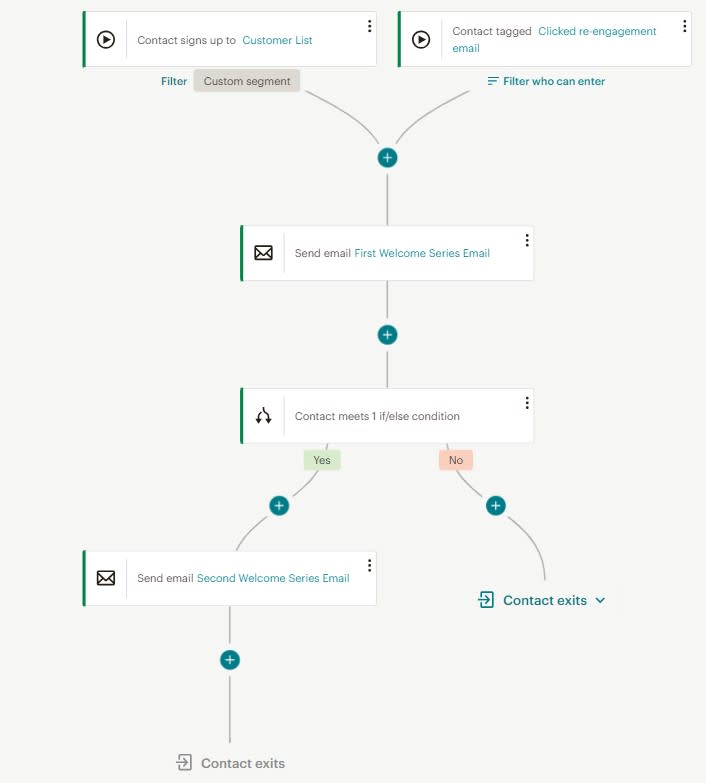
It's worth noting, however, that while MailerLite offers automation in its free plan, Mailchimp's free users miss the automation party entirely. Even Mailchimp's Essentials plan only allows four "journey points," meaning you need to upgrade to Mailchimp's Standard plan to get free reign on automations.
Mailchimp makes much better use of AI
MailerLite's AI features—an AI subject line generator and an AI writing assistant—are hard to get excited about. They work well enough, but AI writing tools have offered these features for years. Artificial intelligence demands a more dramatic rethinking of how email marketing software works, rather than a few bolt-on ChatGPT features.
Mailchimp is more thoughtful about how to apply AI to the world of email marketing. For example, Mailchimp's Creative Assistant tool proactively generates AI-powered designs for you based on your brand.
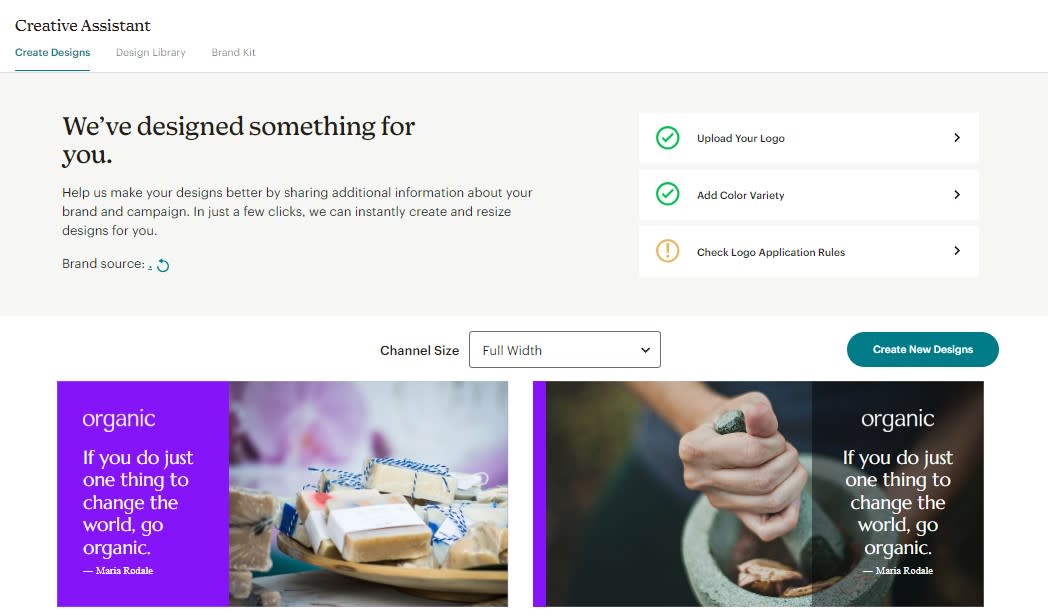
Mailchimp's Intuit Assist AI assistant, currently in beta, can make suggestions for subject lines and write parts of your email for you. But that's just the start of what Mailchimp has planned: its larger vision is to let you use natural language to interact with its AI to automate strategic and creative tasks. You'll be able to give general goals and guidelines—"I want to create an email campaign to announce a new product," for example—and Mailchimp's AI will generate layouts, draft an entire email in your brand's style (including images), and create a highly-personalized custom segment for the email.
Mailchimp's analytics are more robust
If you're looking for simple, well-presented analytics, MailerLite is hard to beat. But beyond looking at beautiful charts of your subscriber count and open rate, there's not too much else you can do. Mailchimp is a better choice for power users, offering powerful analytics and custom reports.
MailerLite's edge is its user interface. Its analytics tend to show up contextually, which means they're always right where you need them to be: for example, the analytics below are baked right into each email in my MailerLite automation workflow. By jumping between emails in the workflow, I can quickly understand how each is performing.

But if you want to dig much deeper, you'll run into limitations with MailerLite. Mailchimp, by contrast, allows you to run detailed performance comparisons and generally offers a deeper level of insights. Mailchimp is a better choice if analytics are important to you, with better demographic reporting, powerful custom reports, and features like Content Optimizer, which gives suggestions to improve your email based on businesses in similar industries.
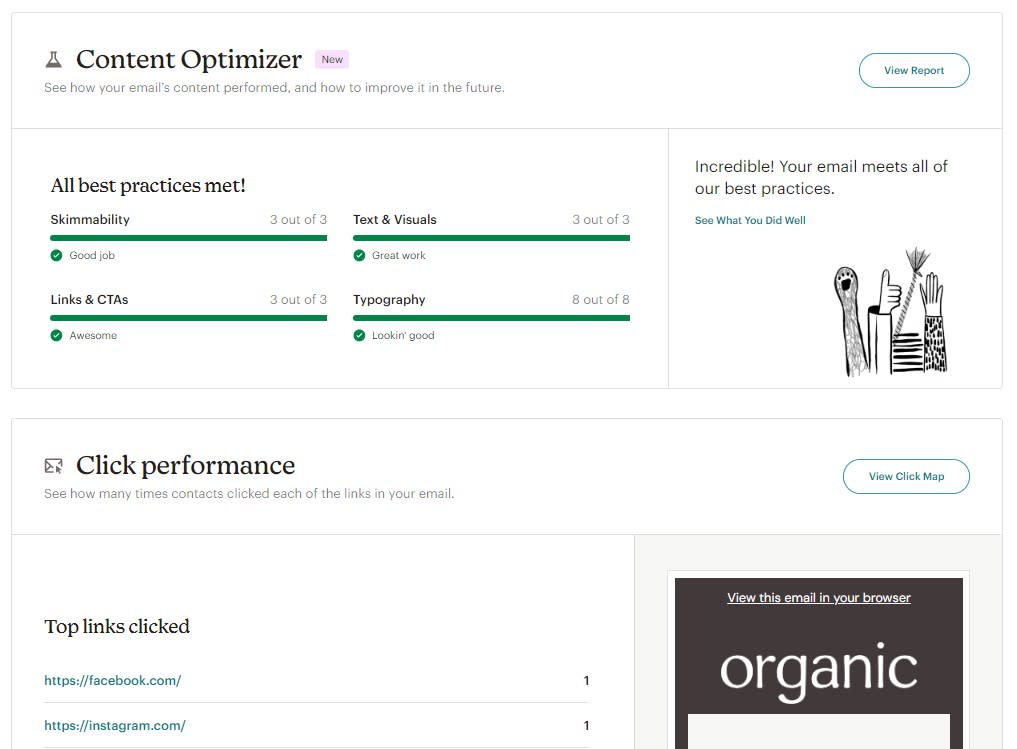
Both have an impressive number of integrations
Both Mailchimp and MailerLite have numerous native integrations: MailerLite has 140+ and Mailchimp has 300+. And both integrate with Zapier, allowing you to connect with pretty much any app you can imagine. Learn more about how to automate Mailchimp or MailerLite, or get started with one of these pre-made workflows.
Add subscribers to MailerLite from newly-updated rows on Google Sheets
Add new Calendly invitees to MailerLite as subscribers.
Zapier is a no-code automation tool that lets you connect your apps into automated workflows, so that every person and every business can move forward at growth speed. Learn more about how it works.
MailerLite vs. Mailchimp: Which should you choose?
Whether MailerLite or Mailchimp works better for you depends, of course, on what you need. If you're on the fence, here are some guidelines to help you decide.
Choose MailerLite if you want to keep costs down, you're a relative beginner to email design and automation, or you just need an excellent email marketing tool (without bells and whistles).
Choose Mailchimp if you run an eCommerce business, you have a brick-and-mortar business and want features like SMS or physical postcards, or you're a marketer and want advanced features and AI.
Related reading:
